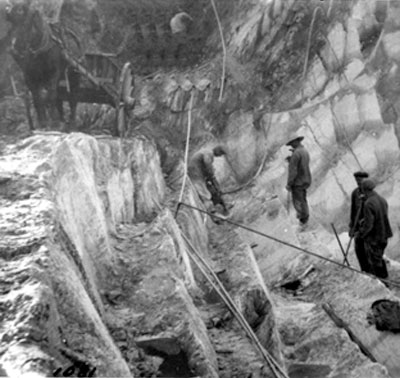
|
A photo of the Broughton mine in 1927: this photo exemplifies
the quarrying techniques used in this mine at the time. |
|
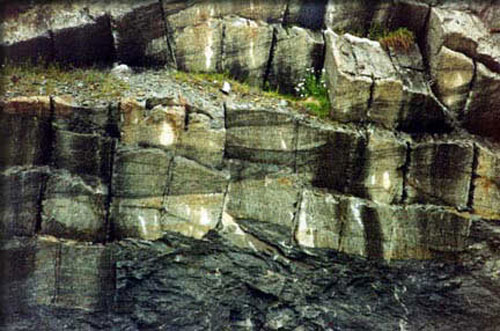
In an older section of the mine, you can see how the blocks
of soapstone were cut.
Each block having to be cut a foot from the previous block gives
the wall a stair like effect. |
|
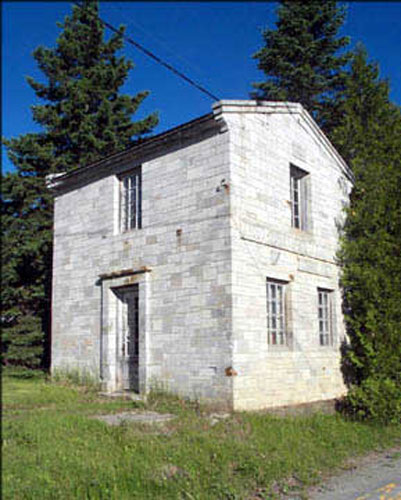
|
In 1933 the Cyr family constructed an office building for
the company using blocks and lintels of soapstone. The township
has been given the building by the previous owners and intend
to convert the building into a soapstone museum. |
|
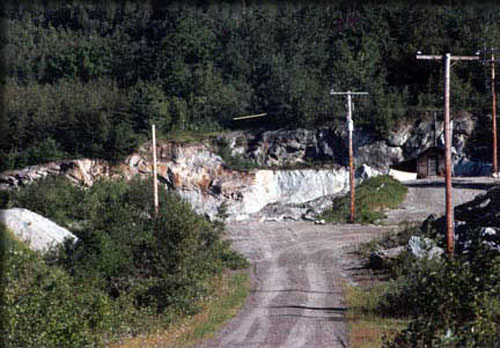
|
This is the view of the original pit that I visited when I
first started buying my stone from them in 1971.
Between 1925 and 1927, a massive steatite horizon was quarried
northwest of Saint-Pierre-de-Broughton to produce refractory
blocks and pencils to make marks on glass or steel. The quarry
is located at the northwestern end of the Pennington sheet At
this place, the original serpentinite is almost completely transformed
into steatite and talc-carbonate rock
Stone was mined from this quary from 1927 until 2002, when
they announced that the quarry was to be closed for good, |
|
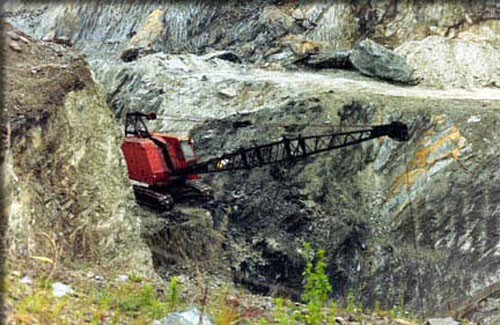
The mine has been quarrying soapstone in different locations
for various purposes (powdered talc used, among other things,
for asphalt products dusting, joint cement and insecticide dust)
since the 1880"s.
The stone is also used as soapstone slabs in the construction
of wood stoves.
From this long period of use, the quarry had become so deep that
a crane was used to raise the blocks from the depths of the quarry. |
|
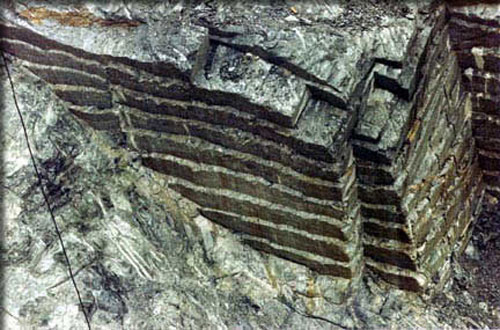
|
The stone was cut from the wall of the quarry , by drilling
a line of holes into the next layer of stone.
The block is then separated along the grain of the stone and
raised to the surface by the crane.
The old pit became to deep and troublesome to operate.
With the new pit in operation, the abandoned old quarry has filled
with water. A 300 foot deep swimming hole. |
|
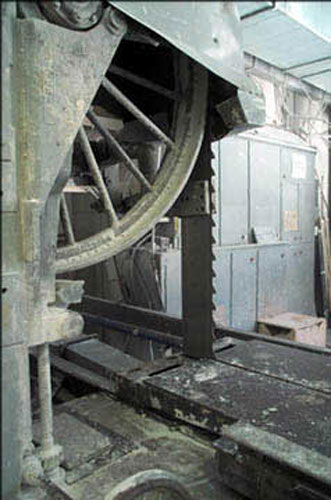 |
|
When I first came to the mine in the early 70's, the stone
was cut using six foot circular saws. In the 1990's the company
had progressed to using a bandsaw. |
|
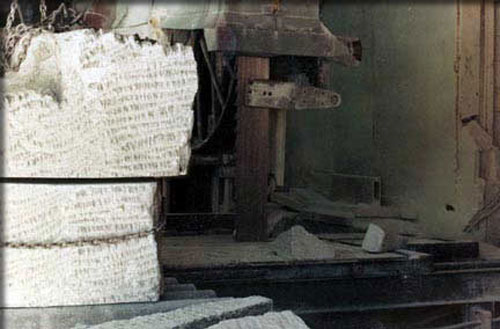
|
|

|
These blocks would be cut into thesizes that
customers ordered. |
|
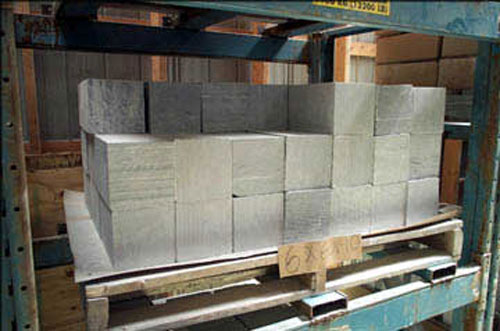
|
In the storeroom the cut blocks of soapstone are stacked
and waiting for a sculptor to turn it into his personal work
of art. |
|
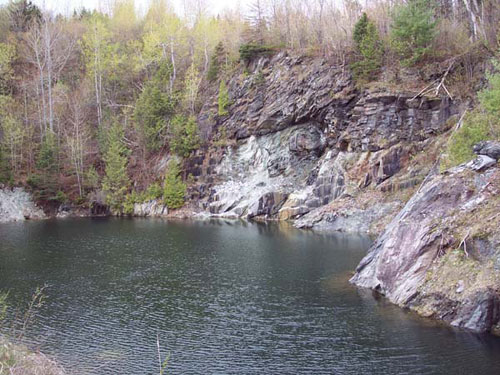
The old quary - 2006 |
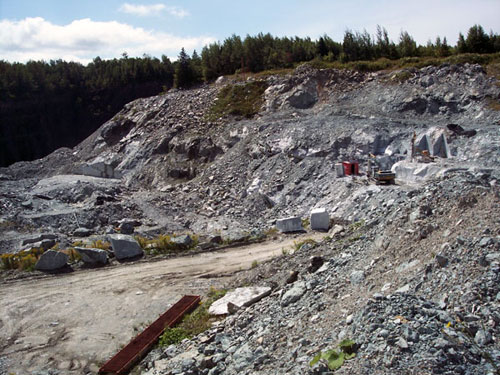 The new quarry - 2008
The new quarry - 2008 |
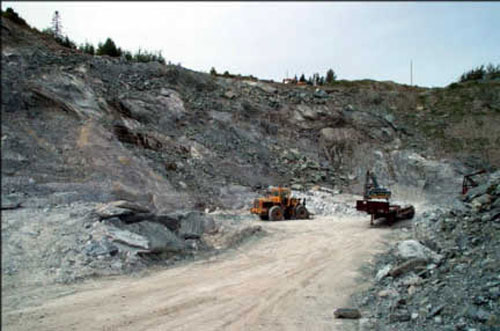
|
Les Pierres Stéatites Inc is the only commercial
talc mine I know that mine soapstone specificly for sculpture.
These pictures where taken about ten years ago
showing the removal of the blocks of soapstone in the new quarry
at that time. |
|
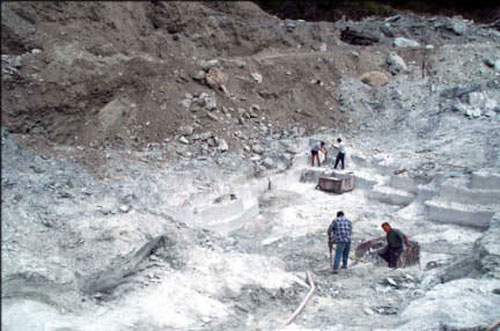
|
The stone was cut from the floor of the quarry , by
drilling a line around the desired block of stone.
The block will then be separated along the grain of the stone.
Here you can see them removing the soapstone block by
block. |
|
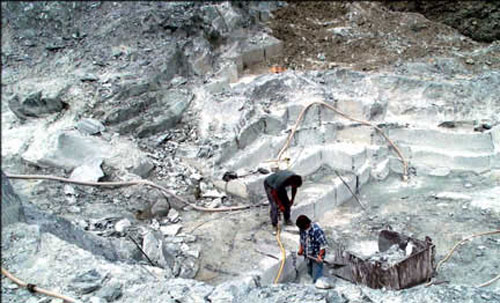
|
One of these blocks will weigh about four tons. |
|
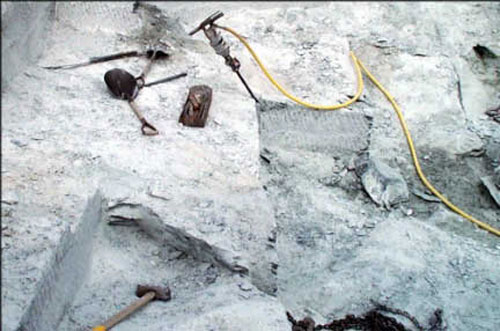
Here are shown some of the tools that were used in
separating the stone from the floor of the quarry.
By cutting the stone from the floor by hand, the
mine can supply quality, fracture free blocks of soapstone for
carving |
|
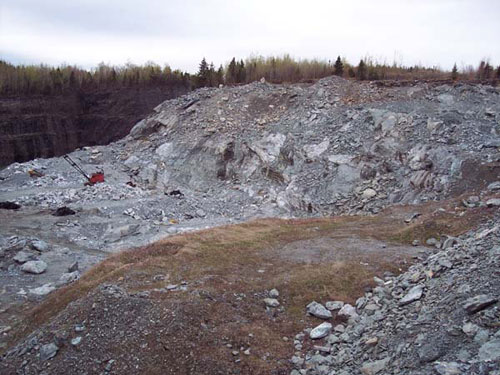 |
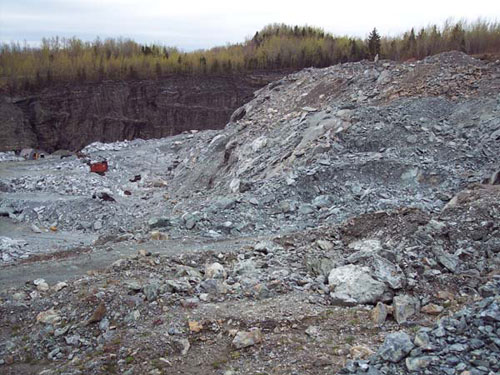 |
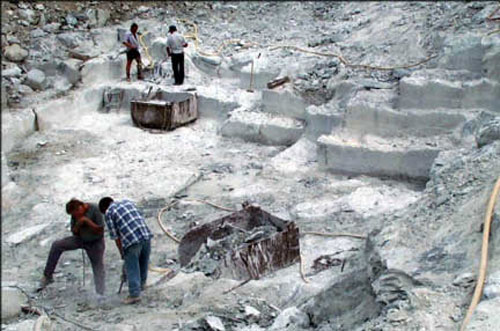 |
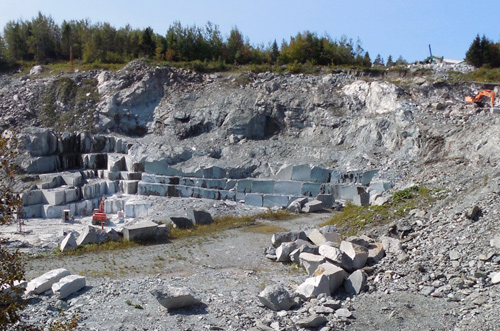
|
With the new cutting techniques, this what the quarry
looks like today. |
|
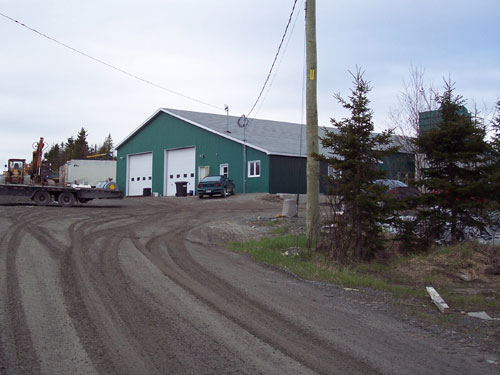
This is the site of Pierre de Stéatite cutting
operations.
770, rang 7 Nord, East Broughton, Quebec, GON 1H0 |
|
|
|
|
|
|
|
|
|
|
|
Here are a few maps to help
you get to the quarry |
|
New York to Pierres
Stéatites Inc |
Boston to Pierres Stéatites
Inc |
|
Atlanta to Pierres
Stéatites Inc |
Buffalo to Pierres
Stéatites Inc |
|
Detroit to Pierres
Stéatites Inc |
Toronto to Pierres
Stéatites Inc |
|
General area to Pierres Stéatites
Inc in East Broughton |
East Broughton, Quebec |
|
|
|
|
|
|




















